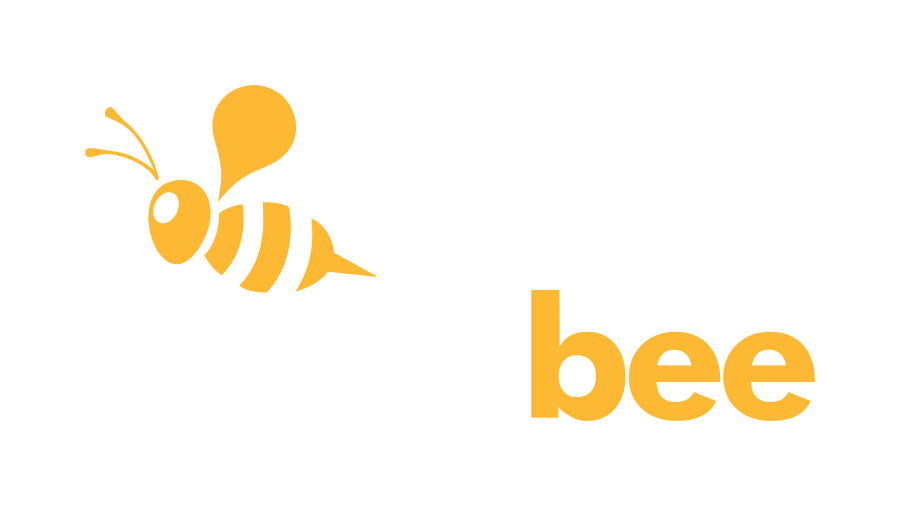
EPISODE 2 | Key Pillars Post Supply Chain Disruption
We discuss about the global shift from “resilience” to “performance and smart decisions” in the new normal. Wolfgang shares his views on the key pillars and realities for supply chains post pandemic, what performance means in real terms for businesses along with some examples. Finally, Wolfgang recommends technologies that will be key for professionals in this paradigm.
- Article
- Transcript
We’re currently working to get the key takeaways for this episode. Stay tuned to Roambee’s Supply Chain Tech Podcast for all the latest episodes to build a more resilient and sustainable supply chain.

Author
Scott Mears
Senior Marketing Manager
SUMMARY KEYWORDS
Supply chain performance, resilience, agility, disruption, COVID-19, remote work, real-time visibility, IoT, communication networks, cloud, analytics, artificial intelligence, tracking shipments, supplier monitoring, fourth industrial revolution.
SPEAKERS
Wolfgang Lehmacher, Scott Hurley
Scott Hurley 00:08
Hello and thanks for tuning in to the Supply Chain Technology Podcast. In this episode, I’m joined by supply chain expert and tech evangelist Wolfgang Lehmacher , and we’ll be discussing the shift from supply chain resilience to performance in the new normal. So thank you for joining us. Wolfgang. Can you please talk about what feedback you’ve been getting from the market of late? Are we still talking about lean methodologies and resilience and how relevant are these in the new normal?
Wolfgang Lehmacher 00:40
Scott, it’s a pleasure to be here and and have that conversation in such an important moment in in history of supply chains, there is a lot of, let’s say, discussion about resilience, and I personally believe that it should be more about a broader topic, the performance, the level of performance of supply chains, about supply chain excellence, supply chain leadership. Because I think that resilience is one part of supply chain performance, and there is more to that, there is speed, there is responsiveness, there is agility, and these factors are all drive the ability of a company to deal with The smaller and the larger disruptions they are facing. And supply chain as a practice, is used to disruption every single day. Supply chain professionals have to deal with a variety of challenges. May it be that the tunnel is closed, that a flight is canceled, that trucks arrive late, and just imagine the traffic jams we have in the big cities. It is just too likely that things don’t go as well, and then the major disruptions are also not a novelty to the supply chain world. We have seen the COVID earthquake. We have seen the Asian financial crisis. We have seen SARS. We have seen 911 we have seen the global financial crisis. We have seen SARS. We have seen h1, n1 with so many, so many things. We have seen the Iceland volcano outbreak. And all the time we had that same discussion about resilience and where I believe it’s much more of the entire about the entire setup of a supply chain.
Scott Hurley 03:05
Sure. So is it fair to summarize then that resilience at this point is table stakes? You need to be resilient to even survive, but the more important is to focus on performance for thriving within what’s always going to be a disruptive environment.
Wolfgang Lehmacher 03:23
It is to be focused on the drivers behind performance. How can I ensure that I know what is going on in my supply chain? Where are my goods? How much do I have on stock? What is happening in the crucial points along the routes, in the ports, at the airports, on the roads, that is one very important point. And then it’s about speed. So how can I reduce cycles, planning cycles. How can I take the slack out of my supply chain? How can I organize myself to, for example, get things from the catwalk to the shop in two weeks instead of six weeks? So that’s the speed, the velocity of the supply chain, then the responsiveness. So what do I have in place when I have identified a disruption, when I identify that a truck is stuck or a shipment is rejected by customs clearance, what do I have in place to respond, what do I have in place to find alternatives? So that’s the flexibility, that’s the agility of a supply chain. And this is important. And of course, this all helps to navigate, to manage situations as we face them, to. Day in times of COVID 19,
Scott Hurley 05:04
Sure, and presumably companies need to make do with less people or people working remotely and still perform. Correct?
Wolfgang Lehmacher 05:15
Yeah, and we have seen the outcome of the experiment. A lot of people work now from home, but still, we have to keep in mind, we are talking about 30% of the workforce, for example, in us, that can work remotely, but the day to day ability, for example, of a company, to do their inventory count remotely, through sensors, through platforms, through live data capture. They have an advantage, but they didn’t put in place these tools to be prepared for COVID 19. They did put them in place to be more performant, to reduce error, to reduce uncertainty, to reduce their planning cycle. And the same is true for let’s say the video conferencing. Video conferencing tools were not developed for a crisis. They were developed based on the vision, and now the vision comes true. And I see these, these fields, like you mentioned, the first one, remote as a very important field. Now to look at, because there is now a very new traction, new dynamics. I spoke about planning, the reduction of planning cycles, the accelerated planning is another field where we see now a lot of movement, because it is very clear before you had the choice, you could leave the planning cycle longer or make it shorter. Now you have to shorten it. We cannot work on a 13 weeks planning cycle anymore. We need a three weeks, four weeks, or sometimes weekly planning cycle. And I also touched upon the need for taking rapid decisions when the truck is stuck or customs clearance issue pops up, and now in times of COVID 19, where overnight regulation can change, where overnight ports can be closed, where overnight flights can be canceled, instant decision making is a very important area, too.
Scott Hurley 07:39
Great. So you talked a little bit about some of the ways that performance can be achieved in terms of better remote working and accelerated planning and instant decision making. What types of tools and technologies would you recommend that companies can use to optimize and achieve that type of performance?
Wolfgang Lehmacher 07:58
I believe the foundational technology bundle is around the monitoring of shipments and the tracking of assets. And there we talk about the internet, internet of things when we want to focus on the technology level, but with the Internet of Things have to come communication networks. So that’s another technology, modern communication technology. With this has to come the cloud. With this has to come analytics, and hence artificial intelligence. So the tracking, establishing the visibility is around these technologies I mentioned. So what is important is to work as a supply chain operator on the visibility first. But with this visibility come very new opportunities. This visibility could be the digital eye on your asset, on your shipments, but I see it as the tool which one should blindly trust, because based on what the digital eye sees, the system can generate early warning signals, alerts to give the people the information needed to know where there is a potential variance so that they can Look at it. And then the system should also ideally propose alternatives, so see, showing if that happens, what people could do, and what the system also what visibility also gives companies and visibility is built on. Data. It gives a lot of benchmarking data. People have a lot of transportation partners, and while tracking the shipments, which are on trucks, on vessels, they are in planes, people see whether their partners respect their contracts, their service level agreements or not, and they can systematically improve their supplier base.
Scott Hurley 10:33
Great. Thank you. What challenges have you seen in adoption of real time visibility technologies that you talked about?
Wolfgang Lehmacher 10:44
Over the years, the challenges have changed. The movement towards visibility through IoT devices started about 10 years ago, but at that point, the devices were not mature. They were too bulky, they were difficult to deploy. They were too expensive. I think we are. We have reached a point where this is not the case anymore. So tracking became affordable. The next hurdle is, of course, the lack of visibility. What is the best solution, and we are also at the beginning now to see what are the leading tracking and monitoring platforms in the world. And one can see that from the media, from the awards, from the rankings. And I think that was another, another hurdle in the way.
Scott Hurley 11:53
So it’s clear. I think the case is clear for for goods such as pharmaceuticals, where you need to monitor temperature across journeys. But is there benefit to real time visibility across categories in industries?
Wolfgang Lehmacher 12:13
I believe the verdict is not out anymore when we hear about the possibility to have in the next, let’s say, three to five years, 1 trillion connected devices. Then I think reality has answered the question. There is always, I think, in the midterm, a use case, which confirms that having having the ability to connect goods to a platform and create visibility, makes sense. So I believe that visibility in supply chain base visibility on each shipment, on each asset, on inventory, is the table stake of 21st century supply chain management?
Scott Hurley 13:12
Great. So when you’re talking to leaders in the industry, are they viewing at this point in time, these types of technologies for performance. I mean, that’s what you are advocating for. But is that what they’re, they’re, they’re how they are viewing it as well. Are they still trying to to achieve resilience for the next time?
Wolfgang Lehmacher 13:36
I think the the main objective is performance, or because with performance I I achieve leadership, right? How can I? How can I be sure that I live up to my promise I’ve given to to the customers without having visibility over the delivery of the goods? So I believe the leadership, the companies, they are convinced that they need to do more to establish that visibility. And is it there? No, it’s not. Do we have to work harder to get more sensors out, to get better, cleaner data? Yes, do we have to put more effort in integrating system and aggregating data sets into data lakes analyze them? Yes, but the fourth industrial revolution has started a few years ago, and it takes, usually, that’s what I think it takes, 10 years to get the rocket picking up speed. And I think that we are now at the beginning of Expo. Financial digitization, and that also is the platform on which the modern supply chain management tools will evolve as well.
Scott Hurley 15:14
Okay, great. Thank you. One of the challenges that I’ve heard others refer to is they have the ability to control what they monitor and track outbound, but their suppliers inbound actually being able to to understand and achieve monitoring from them. So what options are there for companies working with their suppliers to be able to get actual real time information from them as well.
Wolfgang Lehmacher 15:46
It could be through asking them to track the shipment from the beginning. That means that the tracking starts at supplier level, and these through, again, sensors or unique unique barcode is another solution, and then follow it through, I believe that we have already seen in terms of tracking from supplier down to to the final consumer. Major advancement in the last, let’s say, six to 18 months, I see that that traction, so maybe also a process which is not yet mainstream, but the tools are available.
Scott Mears 16:46
Hi, my name is Scott Mears, and I’m one of the hosts of the Supply Chain Tech Podcast with Roambee. On this podcast, we talk to supply chain heroes from around the world about everything, ranging from the disruptions related to supply chains, their personal experiences with tracking technologies, strategies to build resilience and much, much more. We already have some recommended videos for you to the side of me, and if any of this sounds interesting to you, do subscribe to our Youtube channel and hit the bell icon so you don’t miss another Roambee video. I’ll see you next time you.







